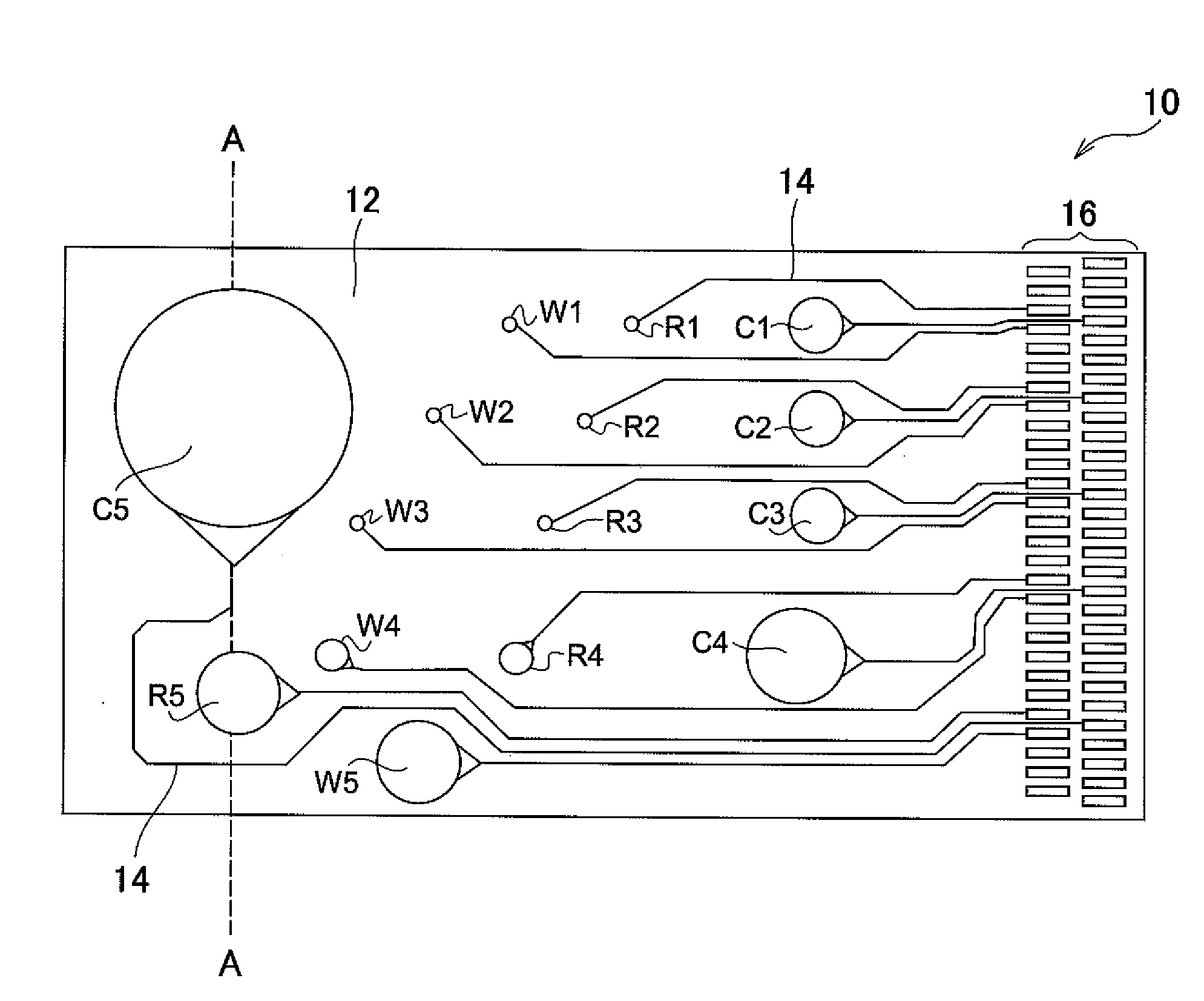Sensor, sensor system, portable sensor system, method of analyzing metal ions, mounting substrate, method of analyzing plating preventing chemical species, method of analyzing produced compound, and method of analyzing monovalent copper chemical species
a technology of monovalent copper and metal ions, which is applied in the field of portable sensor systems, sensors, and portable sensors, can solve the problems of difficult to reduce manufacturing costs and form a multi-layer structure, limit the accommodation of wiring lines, and deterioration of ecosystems by food chains and global warming, and achieves improved reproducibility of quantitative analysis, low cost, and high efficiency.
- Summary
- Abstract
- Description
- Claims
- Application Information
AI Technical Summary
Benefits of technology
Problems solved by technology
Method used
Image
Examples
example 1
[0293]As shown in FIGS. 15 and 20, an acid solution of copper sulfate (CuSO4) including about 0.1 to 10 mM of monovalent copper ions was processed to check a difference in cyclic voltammetry. That is, first, a solution was neutralized by an equivalent of sodium hydroxide and sodium sulfide was added to the neutralized solution. As a result, a blackish brown hardly soluble deposit occurred. The solution was filtered and a self-assembled film that was made of nonanedithiol and was disposed on a gold (111) plane was immersed in the obtained filtrate for two minutes. Then, the film was taken out and rinsed with 0.1 M of potassium peroxide solution once. Then, cyclic voltammetry was performed in 20 mM of potassium peroxide solution. In this case, three electrodes, that is, a silver / silver chloride electrode serving as the reference electrode, a platinum substrate with a thickness of 1 mm and a size of about 5 mm×about 10 mm, serving as the counter electrode, and a self-assembled film (ar...
example 2
[0294]Next, a silver / silver chloride electrode, serving as the reference electrode, that was electrochemically used was immersed in a liquid to be analyzed. A Pt electrode with a size of about 10 mm×about 10 mm, serving as the counter electrode, was immersed in the liquid to be analyzed. A square plate which had one side with a length of about 5 mm and in which gold was coated with a thickness of 500 nm on mica by vapor deposition, serving as the working electrode, was immersed in the liquid to be analyzed. The electrodes were connected to Potentiostat PGSTAT12 for cyclic voltammetry manufactured by AutoLab Instrument. An acid solution of monovalent copper ions subjected to nitrogen bubbling was added as the liquid to be analyzed to prepare a mixed acid solution of 0.2 to 3.3 mM of monovalent copper ions including an excess sulfuric acid. The three electrodes were immersed in each monovalent copper ion solution. The working electrode was swept from +0.2 V to +2.0 V and the oxidation...
example 3
[0296]Next, a square plate which had one side with a length of about 5 mm and in which tough carbon was coated with a thickness of 100 nm on a glass epoxy resin substrate by vapor deposition, serving as the reference electrode, was immersed in a liquid to be analyzed. A rectangular plate with a size of about 10 mm×about 10 mm in which tough carbon was coated with a thickness of 100 nm on a glass epoxy resin substrate by vapor deposition, serving as the counter electrode, was immersed in the liquid to be analyzed. A square plate which had one side with a length of about 5 mm and in which gold was coated with a thickness of 500 nm on mica by vapor deposition, serving as the working electrode, was immersed in the liquid to be analyzed. The electrodes were connected to Potentiostat PGSTAT12 for cyclic voltammetry manufactured by AutoLab Instrument. An acid solution of monovalent copper ions was added as the liquid to be analyzed to an aqueous solution including about 200 mM of copper su...
PUM
| Property | Measurement | Unit |
|---|---|---|
| distance | aaaaa | aaaaa |
| temperature | aaaaa | aaaaa |
| temperature | aaaaa | aaaaa |
Abstract
Description
Claims
Application Information
 Login to View More
Login to View More - R&D
- Intellectual Property
- Life Sciences
- Materials
- Tech Scout
- Unparalleled Data Quality
- Higher Quality Content
- 60% Fewer Hallucinations
Browse by: Latest US Patents, China's latest patents, Technical Efficacy Thesaurus, Application Domain, Technology Topic, Popular Technical Reports.
© 2025 PatSnap. All rights reserved.Legal|Privacy policy|Modern Slavery Act Transparency Statement|Sitemap|About US| Contact US: help@patsnap.com



